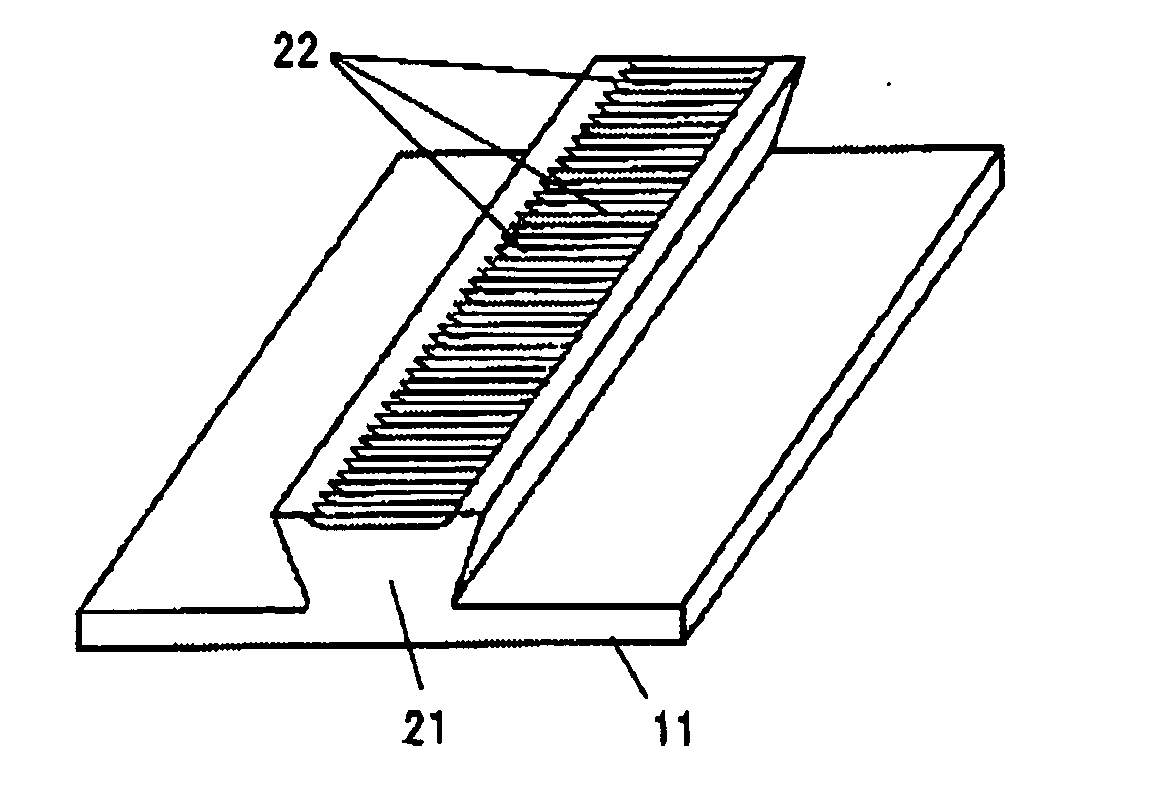Quantum nanostructure semiconductor laser
- Summary
- Abstract
- Description
- Claims
- Application Information
AI Technical Summary
Benefits of technology
Problems solved by technology
Method used
Image
Examples
Embodiment Construction
[0052]FIG. 1A shows the structure of a quantum nanostructure semiconductor laser that is a first preferred embodiment of the present invention, and FIG. 1B is a scanning electron micrograph showing an enlarged view of the principal portions. A compound semiconductor substrate 11 provides the overall physical and mechanical support for the device. A ridge 21 is formed on the substrate 11. The ridge 21 is formed as a stripe extending along the direction of laser beam emission, and preferably has a reverse mesa shape. A plurality of parallel V-grooves 22 is formed on the surface of the ridge 21, with each of the V-grooves 22 extending orthogonally to the lengthwise direction of the ridge 21.
[0053] A technique that is already known, such as from Reference 4, is used to epitaxially grow at least a lower cladding layer 12 on the ridge 21, which is followed by the forming of finite length quantum wires 13 at a position corresponding to the position of the V-grooves 22, an upper cladding l...
PUM
 Login to View More
Login to View More Abstract
Description
Claims
Application Information
 Login to View More
Login to View More - R&D
- Intellectual Property
- Life Sciences
- Materials
- Tech Scout
- Unparalleled Data Quality
- Higher Quality Content
- 60% Fewer Hallucinations
Browse by: Latest US Patents, China's latest patents, Technical Efficacy Thesaurus, Application Domain, Technology Topic, Popular Technical Reports.
© 2025 PatSnap. All rights reserved.Legal|Privacy policy|Modern Slavery Act Transparency Statement|Sitemap|About US| Contact US: help@patsnap.com



